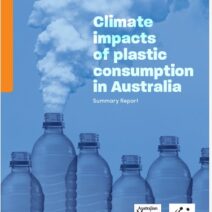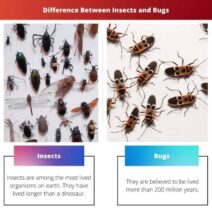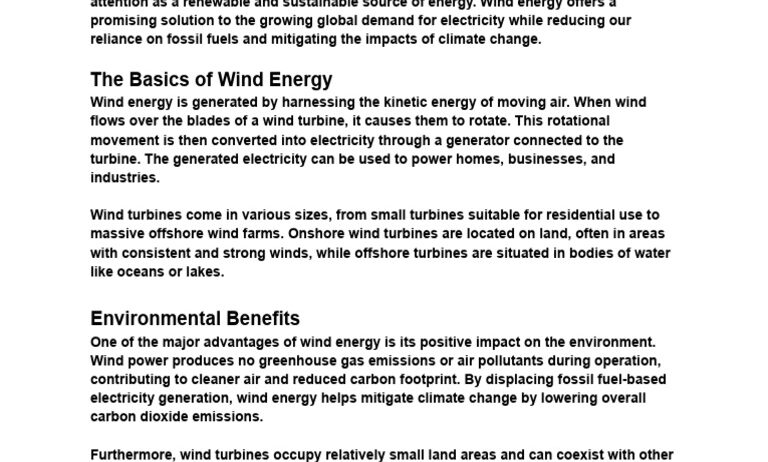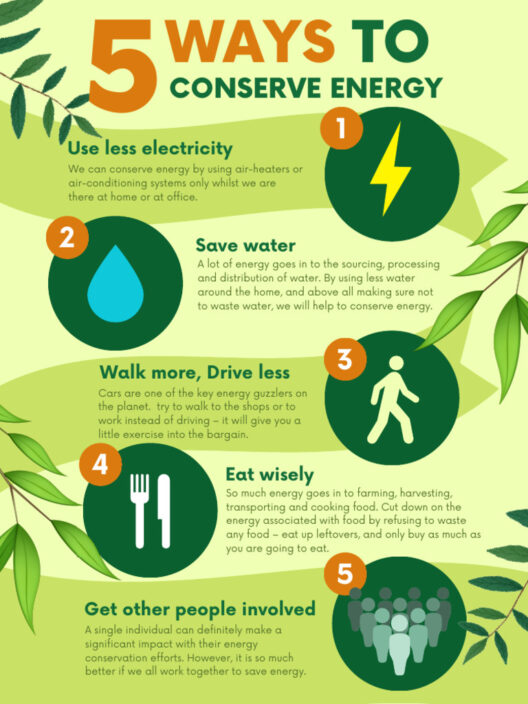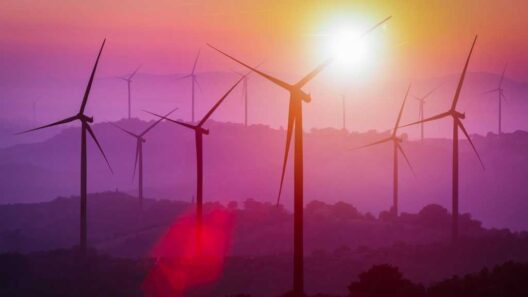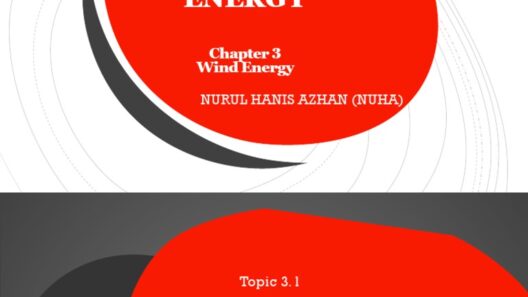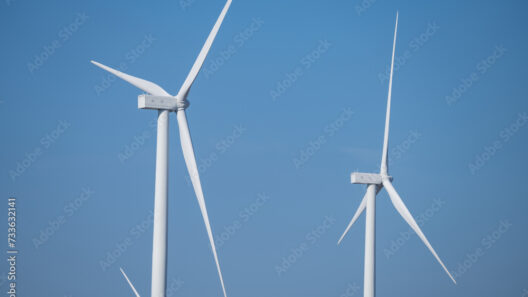Wind energy stands as a beacon of opportunity in the quest for sustainable power. As civilization grapples with the ramifications of fossil fuel consumption, the winds of change beckon individuals and communities alike to harness this inexhaustible resource. This guide explores the mechanisms, applications, and actionable steps one can take to effectively utilize wind energy to meet personal or communal energy needs.
Understanding the Mechanics of Wind Energy
To tap into wind energy, one must first comprehend the fundamental principles underpinning its harnessing. Wind energy production involves converting kinetic energy — the energy of moving air — into electrical energy, which can subsequently power homes, businesses, and even entire cities. Central to this process are wind turbines, meticulously engineered machines designed to capture wind’s potential and transform it into usable energy.
The anatomy of a wind turbine consists of rotor blades, a generator, a tower, and ancillary components such as inverters and control systems. As the wind sweeps across the blades, they rotate, activating the generator, which then produces electricity. The energy harvested can be used immediately, stored in batteries, or fed into the electrical grid, a versatile approach that enhances energy reliability.
How Wind Energy Can Be Utilized
Harnessing wind energy isn’t confined to massive wind farms dotting expansive landscapes. Innovative approaches allow for localized installations that cater to specific energy needs.
Residential Wind Turbines
For homeowners seeking to embrace renewable energy, installing a residential wind turbine emerges as a viable solution. Smaller-scale turbines can generate sufficient energy for everyday use, reducing reliance on conventional power sources. Key considerations include site selection, local regulations, and assessing average wind speed — factors that directly influence a turbine’s efficiency. In regions with consistent wind patterns, even a modest turbine can yield substantial energy savings over time.
Community Wind Projects
Collaboration often amplifies the benefits of wind energy. Community wind projects harness the collective resources and commitment of individuals within a neighborhood or small town. These cooperatives allow participants to share the costs, profits, and responsibilities of wind energy production. Furthermore, pooling resources fosters a sense of community while empowering local economic development through job creation and sustainable energy usage.
Agricultural Applications of Wind Energy
Farmers and agricultural producers can capitalize on wind energy by integrating turbines into their land management strategies. Wind turbines can power irrigation systems, farm equipment, and even livestock feeding operations, optimizing efficiency in energy consumption. By converting what could be an unutilized resource into a source of power, the agricultural sector not only minimizes operational costs but also contributes to the ecological footprint reduction.
Essential Steps for Wind Energy Implementation
Implementing wind energy in an effective and practical manner requires a structured approach. Here are some pivotal steps to consider:
Conducting Wind Resource Assessment
Before embarking on a wind energy project, it is imperative to assess the available wind resources. This involves collecting data on wind speed and direction for an extended period, typically over a year, to inform the decision-making process. Tools such as anemometers can aid in this data collection, ensuring that the selected site is optimal for energy production.
Choosing the Right Turbine
The selection of a wind turbine aligns closely with the intended energy output and location characteristics. Factors such as rotor diameter, height, and design efficiency play critical roles. Furthermore, understanding local zoning laws and obtaining necessary permits ensures that you are well within regulatory compliance while optimizing installation.
Installation and Maintenance
Installation is a critical phase in the wind energy journey. Engaging professionals who specialize in wind turbine installation ensures that safety and technical standards are adhered to. Once operational, ongoing maintenance is vital in preserving the efficiency of the turbine. Regular inspections, cleaning, and addressing wear and tear prolong the lifespan of the system and maximize output.
Education and Community Engagement
Promoting awareness about wind energy within communities can amplify its adoption. Educational initiatives that focus on the benefits of wind energy not only elevate public knowledge but can inspire collective action. Workshops, informational seminars, and partnerships with local governments and organizations can cultivate an environment conducive to renewable energy discourse.
The Environmental Impact of Wind Energy
As the world increasingly pivots towards sustainable practices, the environmental benefits of wind energy become undeniable. Wind energy production results in minimal emissions, translating to cleaner air and a reduction in greenhouse gases. Moreover, transitioning to wind lowers dependency on finite resources and mitigates the risks associated with climate change.
Conclusion: Embracing the Wind of Change
The journey towards harnessing wind energy for personal and communal use beckons a shift in perspective. From residential installations to community engagements and educational endeavors, the promise of wind energy extends beyond mere electricity generation. It represents a movement towards sustainability, resilience, and communal empowerment in facing the looming challenges of climate change. With informed choices and collaborative efforts, a future powered by the wind is not merely a dream; it is a tangible, attainable reality that invites everyone to participate in innovative ways of energy consumption.
